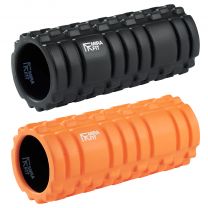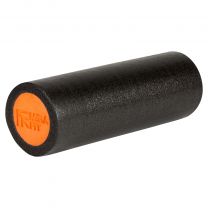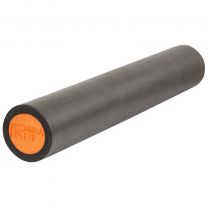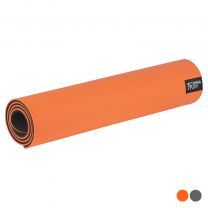How To Use A Foam Roller
How To Use A Foam Roller

If you haven’t yet embraced the foam roller, you are missing out.
Anyone who goes to the gym regularly knows that training can really take its toll on your muscles and when you have DOMS to compete with too, it’s quite normal to be swaggering around like John Wayne come the weekend.
And even if you’re not a regular gym-goer, sitting down at a desk all day or even just rushing around with heavy bags can mean your muscles soon start to feel it.
There are different types of Foam Roller available ranging from smooth, high-density foam to extra bumpy. Essentially, they are used to help ease tightness in your muscles, smooth out knots and address trigger points.
You can use them before and after a workout and in fact, there are lots of people who use them several times a day, depending on their routine and if they have any injuries.
WHAT DOES A FOAM ROLLER DO?
Essentially, foam rollers allow you to use your body weight to perform self-myofascial release (SMR). Fascia is the sheet of connective tissue that lies beneath the skin and separates muscles from other internal organs.
As you train, the fascia becomes restricted and inflamed. When this happens, it starts to thicken which can feel painful. By using the foam roller on these areas, you can release the tension and improve range of movement around your whole body.
It's also possible to develop trigger points in the fascia which form like knots in the body. Extra tender, they can “twitch” as you compress them, but regular massage can really help ease the pain.
Basically, foam rollers will help you to keep your muscles in good working order, helping to ease pain and improve range of movement. They’re also really therapeutic too as you can give your muscles a good massage without the price tag of seeing a therapist!
DO FOAM ROLLERS REMOVE LACTIC ACID?

Foam rollers can also help with lactic acid build up. When you do intense exercise, your body produces lactate to help fuel your muscles without the need for oxygen. But if your body produces more lactate then you can burn off, you can get lactic acid build up which can leave your muscles feeling sore and achy.
By using a foam roller, you can help your body to break down lactic acid to ease the pain and restore your muscles to full working order.
WHICH FOAM ROLLER IS THE BEST?
Foam rollers come in a range of sizes and vary in surface textures too to benefit different parts of the body. The extra knobbly foam rollers are brilliant for working thicker areas of tension for example around your glutes, hamstrings and upper back. The smoother areas can then be used for more delicate areas such as your arms and hips.
High-density, smooth foam rollers are also great for working areas of tension as well as improving range of motion – especially in areas where using a more textured foam roller would be just too painful.
Smooth foam rollers are best for working the inside of your legs, the sides of your hips, your lower back and can also be used behind your knees and on your ankles and feet too.
These might not feel like areas of tension but releasing tightness around these parts can help with range of movement when doing things like squats and Yoga.
HOW TO USE A FOAM ROLLER

To release tension, you’ll need to use your bodyweight to add pressure on the areas you are working. Place the foam roller on your major muscle groups and relax the part of your body that’s on the foam roller. You can then move the roller slowly back and forth across the muscle to ease away any tension.
Work your whole body as often as you need, paying particular attention to trigger points like those often found around the glutes.
To make sure you reach the deeper layers of fascia, you can use the foam roller on muscles as they are stretched out, so try and focus on adjusting your body shape to allow for an effective massage, while maintaining a relaxed form.
For sore points, hold the foam roller in position for around 30 seconds, making sure to relax and then push into the roller to intensify the massage. This can feel quite painful but doing this regularly is one of the most effective ways to reduce tension. Just remember not to hold it in position for too long as you don’t want to irritate or further inflame the injury.
It’s also a good idea to massage the areas around your sore points to ease areas where the pain might be sourced from.
FOAM ROLLING FOR INJURIES
If you have strained a muscle, you might start to feel it tighten up. As it begins to heal, many of us feel the need to stretch it out but this can make it worse.
Using a foam roller alongside strengthening the area can really help rehabilitation as regular light massage helps to ease tension without strain. Just make sure you don’t use a foam roller on the inflamed area for too long while it is still healing so as not to aggravate the area even further.
FOAM ROLLING FOR RUNNERS
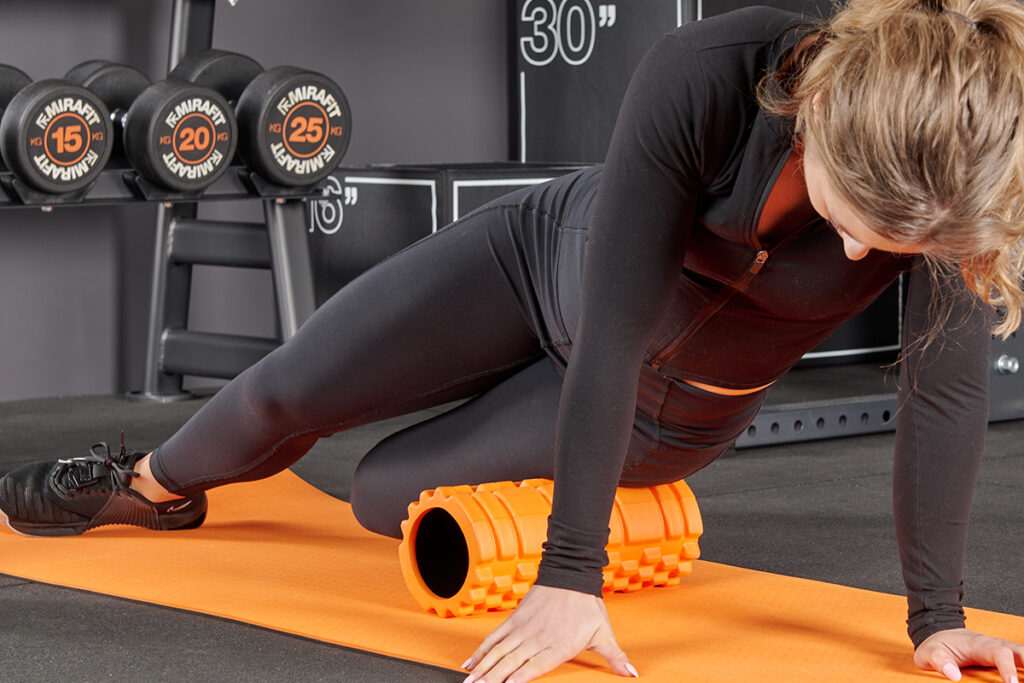
Regular running – especially long distance running – can make your lower body muscles feel very tight so foam rollers are especially useful if you do this sort of exercise.
Inflammation of the IT band or Iliotibial band – which is the fascia that runs down the outside of the thigh from the hip to the shin – is particularly common in runners and can be very painful.
A combination of regular foam roller work and stretching is ideal for runners who suffer from this as it helps to keep the IT band supple, so the pain is less likely to return.
FOAM ROLLERS – DOS AND DON’TS:
Do
• Use a foam roller regularly
• Massage tight muscles slowly and carefully
• Stay relaxed while using a foam roller
• Target trigger points
• Use over joints to improve range of movement
Don’t
• Use a foam roller on sore areas for too long as it can further inflame the area
• Just foam roll after exercise – do it before and after to help improve your performance
• Use a foam roller that’s too hard on areas where there is less muscle – this can cause bruising
• Just use a foam roller on the days when you exercise, help ease tension from sitting by using it on your rest days too
And there you have it!
Foam rollers are brilliant, simple pieces of kit you can keep at home and bring out whenever you need. They can be used whenever and are easy to fit in while watching TV or when you get up/go to bed.
Massaging can really help relieve tightness, so you feel much more relaxed throughout the day and having more supple muscles will help to improve your performance in the gym!
WHICH FOAM ROLLER IS BEST FOR ME?

Thinking of getting a foam roller? Mirafit Foam Rollers are brilliant for helping you take care of your muscles as well as address any trigger points that you may have. Great for runners as well as those who enjoy things like Yoga and Pilates, they can help you to ease tension and reduce muscle soreness.
The Mirafit Deluxe Hi-Density Foam Roller is perfect for working areas such as your glutes and hamstrings, and the Mirafit EPE Foam Roller is great for easing soreness in areas such as your inner thighs, lower back and hip flexors.
For more content, follow us on Instagram, YouTube, TikTok, and on our official Mirafit Facebook page.
Enter your email to signup to our newsletter
Tags: Equipment > Rollers ; Exercise Type > Conditioning ; Misc > Recovery

